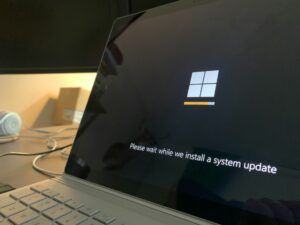How hard is it to democratize data? It’s a question that many organizations are grappling with as they seek to unlock the full potential of their data assets. While data democratization has many benefits, such as improved decision-making and enhanced innovation, it also presents a number of challenges.
From lack of data literacy to data silos and security concerns, there are many obstacles that organizations need to overcome in order to successfully democratize their data. But the rewards are worth it. By democratizing data, organizations can create a more open and transparent culture around data, where everyone has access to the information they need to make informed decisions.
In this article, we’ll explore the challenges and benefits of data democratization and provide some tips and strategies for organizations that are looking to democratize their data.
What is data democratization?
Data democratization is a term that has been gaining traction in recent years, referring to the process of making data more accessible and usable for a wider range of people. Essentially, it involves removing barriers to accessing and using data so that it is no longer the exclusive domain of data scientists and other experts.
To democratize data, organizations need to provide people with the tools and resources they need to access, analyze, and draw insights from data.

This might involve creating user-friendly data visualization tools, offering training on data analysis and visualization, or creating data portals that allow users to easily access and download data.
The ultimate goal of data democratization is to create a more open and transparent culture around data, where everyone has access to the information they need to make informed decisions.
Why is data democratization important?
Data democratization is important for a number of reasons. First and foremost, it helps to level the playing field, giving more people the opportunity to access and use data. This can help to democratize decision-making processes, as more people are able to participate in discussions and make informed choices based on data.
In addition, data democratization can help organizations to be more innovative by providing more people with access to the data they need to develop new ideas and solutions. It can also help organizations to be more agile by allowing them to respond more quickly to changing market conditions and customer needs.
Another key benefit of data democratization is that it can help to improve data quality by making it easier for people to spot errors and inconsistencies in data. This can lead to better data governance practices and, ultimately, more accurate insights.
The relationship between data democratization and data governance
While data democratization is an important goal, it is also important to ensure that proper data governance practices are in place to ensure that data is managed appropriately. Good data governance practices can help to ensure that data is accurate, complete, and secure and that it is being used in accordance with relevant regulations and policies.
Data governance practices can help organizations to identify potential risks and to mitigate them before they become serious issues. For example, data governance practices can help organizations ensure that data is being used in a way that is consistent with privacy regulations or that sensitive data is being protected appropriately.
The data governance framework is an indispensable compass of the digital age
In order to effectively democratize data, organizations need to strike a balance between providing people with access to data while also ensuring that proper data governance practices are in place. This might involve creating policies and procedures around data access and use, establishing data quality standards, or providing training on data governance best practices. Ultimately, it is only by combining data democratization and data governance that organizations can truly unlock the potential of their data.
Challenges of data democratization
While data democratization has many benefits, it also presents a number of challenges that organizations need to be aware of in order to successfully implement a data democratization strategy.
Lack of data literacy
One of the biggest challenges of data democratization is that many people lack the data literacy skills they need to effectively analyze and draw insights from data. This can be particularly challenging in organizations that have a large number of employees who may not have a background in data analysis or data science.
To address this challenge, organizations need to invest in training and education programs that help to build data literacy skills among employees. This might involve offering training on data analysis tools and techniques or creating user-friendly data visualization tools that make it easier for people to interpret data.
Data silos
Another challenge of data democratization is that data can be siloed within different departments or business units, making it difficult for people outside of those areas to access and use the data they need. This can be particularly challenging in large organizations with complex structures.

To overcome this challenge, organizations need to implement strategies that break down data silos and make it easier for people to access and use data across different departments and business units. This might involve creating centralized data repositories or implementing data sharing agreements between different departments.
Security and privacy concerns
A third challenge of data democratization is that it can raise security and privacy concerns, particularly if sensitive data is being shared more widely. Organizations need to ensure that appropriate security and privacy measures are in place to protect data and comply with relevant regulations and policies.
This might involve implementing access controls to limit who can access certain types of data, or encrypting data to protect it from unauthorized access. Organizations also need to establish policies and procedures around data sharing and data use, and to train employees on best practices for data security and privacy.
While data democratization has many benefits, it also presents a number of challenges that organizations need to be aware of and address in order to successfully democratize their data. By investing in data literacy training, breaking down data silos, and implementing appropriate security and privacy measures, organizations can unlock the full potential of their data and drive better decision-making.
How to democratize data?
Democratizing data can seem like a daunting task, but there are several steps organizations can take to make data more accessible and usable for a wider range of people. Here are five key steps to democratizing data:
Identify data sources
The first step in democratizing data is to identify the sources of data that are available within the organization. This might include data from customer relationship management (CRM) systems, social media platforms, or other sources.
By identifying the sources of data, organizations can begin to develop a strategy for making that data more accessible to people who need it.
Define data governance policies
The second step in democratizing data is to define data governance policies that ensure that data is managed appropriately. This might involve establishing data quality standards, developing policies and procedures around data access and use, or creating data sharing agreements between different departments.
By establishing clear data governance policies, organizations can ensure that data is being used in a way that is consistent with relevant regulations and policies.

Provide tools and resources for data access
The third step in democratizing data is to provide people with the tools and resources they need to access and use data effectively. This might include creating user-friendly data visualization tools, offering access to data analytics software, or developing data portals that make it easy for people to find and download the data they need.
By providing tools and resources for data access, organizations can help to break down barriers to accessing and using data.
Offer training and support for data analysis
The fourth step in democratizing data is to offer training and support for data analysis. Many people may lack the skills and knowledge they need to effectively analyze and draw insights from data.
By offering training and support, organizations can help to build data literacy skills among employees and empower them to make informed decisions based on data.
Encourage collaboration and sharing of insights
The final step in democratizing data is to encourage collaboration and sharing of insights across the organization. By creating a culture of data-driven decision-making, organizations can help to ensure that data is being used to its full potential.
This might involve creating cross-functional teams that work together on data analysis projects, or establishing forums for sharing insights and best practices around data analysis.
By following these five steps, organizations can take a strategic approach to democratizing their data and empowering more people to access, analyze, and draw insights from data. By democratizing data, organizations can drive better decision-making, foster innovation, and ultimately, achieve better business outcomes.
Benefits of data democratization
Data democratization has many benefits for organizations that are willing to invest in the necessary resources and infrastructure. Here are four key benefits of data democratization:
Improved decision-making
One of the biggest benefits of data democratization is that it can lead to improved decision-making. By providing more people with access to data, organizations can ensure that decision-making is based on more accurate and comprehensive information.
Data democratization can help to democratize decision-making processes, as more people are able to participate in discussions and make informed choices based on data. This can lead to better decisions and better outcomes for the organization as a whole.
Enhanced innovation and creativity
Another key benefit of data democratization is that it can enhance innovation and creativity within the organization. By providing more people with access to data, organizations can tap into the collective intelligence of their employees and foster a culture of innovation.
Data democratization can help to create a more open and transparent culture around data, where everyone has access to the information they need to develop new ideas and solutions. This can help organizations to be more innovative, by providing more people with access to the data they need to develop new ideas and solutions.

Increased transparency and accountability
A third benefit of data democratization is that it can increase transparency and accountability within the organization. By making data more accessible and usable for a wider range of people, organizations can create a more open and transparent culture around data.
This can help to ensure that decisions are being made based on accurate and complete information, and that there is a shared understanding of how data is being used within the organization. This can help to increase trust and accountability within the organization, and ultimately, lead to better outcomes.
Better customer experiences
Finally, data democratization can lead to better customer experiences. By providing more people with access to customer data, organizations can gain a deeper understanding of their customers and their needs.
This can help to inform product development, marketing, and customer service strategies, leading to more personalized and targeted customer experiences. This can help to increase customer satisfaction and loyalty, ultimately leading to better business outcomes.
Data democratization has many benefits for organizations that are willing to invest in the necessary resources and infrastructure. By improving decision-making, enhancing innovation and creativity, increasing transparency and accountability, and delivering better customer experiences, organizations can unlock the full potential of their data and drive better business outcomes.
How can data science optimize performance in IoT ecosystems?
Examples of successful data democratization
Many organizations have successfully democratized their data, unlocking the full potential of their data assets and driving better business outcomes. Here are a few examples of successful data democratization initiatives:
The City of Boston
The City of Boston has been a leader in data democratization, making data more accessible and usable for residents, businesses, and city employees. The city has created a data portal that allows anyone to access and download data on a wide range of topics, from public safety to transportation to environmental sustainability.
To democratize data, the City of Boston has also launched several initiatives to improve data literacy among city employees and residents. The city has created a data analytics team that works across city departments to analyze and draw insights from data, and has also launched a program to train city employees on data analysis tools and techniques.
Thanks to this strategy, the City of Boston has been able to drive better decision-making, improve public services, and foster a more engaged and informed community.
Starbucks
Starbucks is another organization that has successfully democratized its data, using data analytics and visualization tools to improve customer experiences. The company has created a customer data platform that brings together data from a variety of sources, including point-of-sale systems, mobile apps, and social media.
To democratize data, Starbucks has also created user-friendly data visualization tools that allow employees across the organization to easily access and analyze customer data. This has helped the company to better understand customer preferences and behavior, and to develop more personalized and targeted marketing and product strategies.
By democratizing data, Starbucks has been able to deliver better customer experiences and drive business growth.
The World Bank
The World Bank is another organization that has been at the forefront of data democratization, making its data assets more accessible and usable for governments, researchers, and citizens around the world. The World Bank has created an open data portal that provides access to a wide range of data on topics such as poverty, health, and education.
To democratize data, the World Bank has also launched several initiatives to improve data literacy and data use among governments and citizens. The organization has created a data literacy program that provides training on data analysis and visualization tools, and has also established partnerships with governments and other organizations to help them use data to inform policy-making and drive better outcomes.
This way, the World Bank has been able to promote transparency and accountability, and to help governments and citizens around the world make more informed decisions based on data.
These examples demonstrate that data democratization can lead to better decision-making, enhanced innovation and creativity, increased transparency and accountability, and better customer experiences. By democratizing data, organizations can unlock the full potential of their data assets and drive better business outcomes.
Data democratization tools
There are several data democratization tools available that organizations can use to make data more accessible and usable for a wider range of people. Here are three examples of data democratization tools:
The data catalog
A data catalog is a tool that allows organizations to create a centralized repository of data assets, making it easier for people to find and access the data they need. A data catalog can include information about the data, such as its source, format, and quality, as well as information about who has access to the data and how it can be used.
To democratize data, a data catalog can help organizations break down data silos and make it easier for people to access and use data across different departments and business units. By providing a single source of truth for data assets, organizations can improve data governance practices and ensure that data is being used in accordance with relevant regulations and policies.
The data mart
A data mart is a subset of a data warehouse that is designed to serve a specific business function or department. Data marts can be used to democratize data by providing people with access to the data they need to perform their job functions more effectively.

For example, a marketing data mart might include data on customer demographics, purchase history, and marketing campaigns, while a sales data mart might include data on sales performance, customer engagement, and pipeline management. By providing people with access to the data they need, data marts can help to democratize decision-making processes and improve outcomes.
The metrics catalog
A metrics catalog is a tool that allows organizations to define and track key performance indicators (KPIs) and other metrics. A metrics catalog can include information about the data sources for each metric, as well as how the metric is calculated and how it is being used within the organization.
To democratize data, a metrics catalog can help organizations ensure that everyone is using the same metrics and KPIs to measure performance. This can help to create a more transparent and accountable culture around data, where everyone has access to the same information and is working towards the same goals.
These tools can help organizations democratize data by making it more accessible and usable for a wider range of people. By implementing these tools, organizations can improve data governance practices, break down data silos, and create a more open and transparent culture around data.
Data governance 101: Building a strong foundation for your organization
Final words
Well, now you know how important is to democratize data! From improved decision-making to better customer experiences, data democratization has many benefits for organizations that are willing to invest in the necessary resources and infrastructure. By following the steps we’ve outlined, such as identifying data sources, defining data governance policies, and providing tools and resources for data access, organizations can take a strategic approach to democratizing their data and unlocking its full potential.
However, it’s important to recognize that democratizing data is not a one-time event, but an ongoing process. Organizations need to continually evaluate and refine their data democratization strategies, in order to keep up with changing business needs and technological advancements.
Ultimately, democratizing data is about creating a culture of data-driven decision-making, where everyone has access to the information they need to make informed choices. By embracing data democratization, organizations can empower their employees, enhance innovation and creativity, and drive better business outcomes. So what are you waiting for? It’s time to democratize your data and unleash its full potential!
- SEO Powered Content & PR Distribution. Get Amplified Today.
- Platoblockchain. Web3 Metaverse Intelligence. Knowledge Amplified. Access Here.
- Source: https://dataconomy.com/2023/04/how-to-democratize-data/
- :is
- $UP
- 1
- a
- Able
- About
- access
- Access to data
- accessible
- accessing
- accountability
- accurate
- Achieve
- across
- addition
- address
- advancements
- agile
- agreements
- Allowing
- allows
- among
- analysis
- analytics
- analyze
- and
- and infrastructure
- Another
- anyone
- approach
- appropriate
- appropriately
- apps
- ARE
- areas
- around
- article
- AS
- Assets
- At
- available
- background
- Balance
- Bank
- barriers
- based
- BE
- become
- before
- begin
- being
- benefit
- benefits
- BEST
- best practices
- Better
- between
- Biggest
- boston
- Break
- Breaking
- Brings
- build
- Building
- business
- businesses
- by
- calculated
- Campaigns
- CAN
- catalog
- centralized
- certain
- challenge
- challenges
- challenging
- changing
- choices
- Citizens
- City
- clear
- collaboration
- Collective
- combining
- community
- company
- Compass
- complete
- complex
- comprehensive
- Concerns
- conditions
- consistent
- continually
- controls
- create
- created
- Creating
- creativity
- CRM
- cross-functional teams
- Culture
- customer
- customer data
- Customer Data Platform
- Customer Engagement
- customer relationship management
- Customer satisfaction
- Customer Service
- Customers
- data
- data access
- data analysis
- Data Analytics
- Data Platform
- data quality
- data science
- data security
- data security and privacy
- data sharing
- data visualization
- data warehouse
- data-driven
- Decision Making
- decisions
- deeper
- defining
- deliver
- delivering
- democratize
- democratized
- Democratizing
- Demographics
- demonstrate
- Department
- departments
- designed
- develop
- developing
- Development
- different
- difficult
- digital
- discussions
- domain
- down
- download
- drive
- driving
- each
- easier
- easily
- Ecosystems
- Education
- effectively
- embracing
- employees
- empower
- empowering
- encourage
- engaged
- engagement
- enhanced
- enhancing
- ensure
- ensuring
- environmental
- Environmental Sustainability
- Errors
- essentially
- establish
- established
- establishing
- evaluate
- Event
- everyone
- example
- examples
- Exclusive
- Experiences
- experts
- explore
- few
- field
- final
- Find
- First
- following
- For
- forefront
- foremost
- format
- forums
- Foster
- Foundation
- Fourth
- Framework
- from
- full
- function
- functions
- Gain
- gaining
- Giving
- goal
- Goals
- good
- governance
- Governments
- Growth
- Hard
- Have
- Health
- help
- helped
- helps
- here
- history
- How
- How To
- HTTPS
- ideas
- identify
- identifying
- implement
- implementing
- important
- improve
- improved
- improving
- in
- include
- Including
- Increase
- increased
- increasing
- Indicators
- inform
- information
- informed
- Infrastructure
- initiatives
- Innovation
- innovative
- insights
- Intelligence
- Invest
- investing
- involve
- iot
- issues
- IT
- ITS
- Job
- jpg
- Keep
- Key
- Know
- knowledge
- Lack
- large
- launched
- lead
- leader
- leading
- Level
- like
- LIMIT
- literacy
- longer
- looking
- Loyalty
- made
- make
- Making
- managed
- management
- many
- many people
- Market
- market conditions
- Marketing
- Marketing Campaigns
- max-width
- measure
- measures
- Media
- metric
- Metrics
- might
- Mitigate
- Mobile
- mobile-apps
- more
- necessary
- Need
- needs
- New
- number
- obstacles
- of
- offer
- offering
- on
- ongoing
- open
- open data
- Opportunity
- Optimize
- order
- organization
- organizations
- Other
- outlined
- outside
- Overcome
- participate
- particularly
- partnerships
- People
- perform
- performance
- Personalized
- pipeline
- Place
- platform
- Platforms
- plato
- Plato Data Intelligence
- PlatoData
- playing
- policies
- policy-making
- Portal
- potential
- Poverty
- practices
- preferences
- presents
- privacy
- procedures
- process
- processes
- Product
- product development
- Program
- Programs
- projects
- promote
- proper
- protect
- protected
- provide
- provides
- providing
- public
- purchase
- quality
- question
- quickly
- raise
- range
- reasons
- recent
- recognize
- refine
- regulations
- relationship
- relevant
- removing
- repository
- researchers
- residents
- Resources
- Respond
- Rewards
- risks
- Safety
- sales
- same
- satisfaction
- Science
- scientists
- Second
- secure
- security
- Seek
- sensitive
- serious
- serve
- service
- Services
- several
- shared
- sharing
- single
- skills
- So
- Social
- social media
- social media platforms
- Software
- Solutions
- some
- Source
- Sources
- specific
- Spot
- standards
- starbucks
- Step
- Steps
- Strategic
- strategic approach
- strategies
- Strategy
- strike
- strong
- successful
- Successfully
- such
- support
- Sustainability
- Systems
- Take
- Tap
- targeted
- Task
- team
- teams
- techniques
- technological
- that
- The
- the information
- the world
- their
- Them
- These
- Third
- three
- time
- tips
- to
- together
- tool
- tools
- Topics
- towards
- track
- traction
- Train
- Training
- Transparency
- transparent
- transportation
- Trust
- truth
- types
- ultimate
- Ultimately
- understand
- understanding
- units
- unleash
- unlock
- unlocking
- usable
- use
- user-friendly
- users
- variety
- visualization
- Waiting
- Warehouse
- Way..
- WELL
- What
- while
- WHO
- wide
- Wide range
- widely
- wider
- willing
- with
- within
- Work
- work together
- working
- works
- world
- World Bank
- worth
- years
- Your
- zephyrnet












